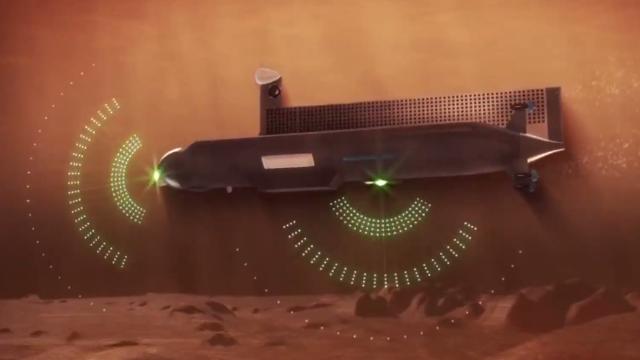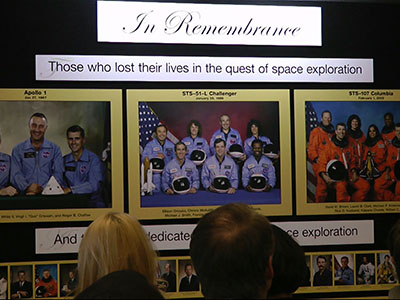
NASA's Dawn spacecraft goes into orbit around Ceres
This Feb. 19, 2015 file image provided by NASA shows the dwarf planet Ceres, taken by the space agency's Dawn spacecraft from a distance of nearly 29,000 miles (46,000 kilometers). On Friday, March 6, 2015, NASAís Dawn spacecraft arrives at the mysterious dwarf planet located in the asteroid belt between Mars and Jupiter after a nearly eight-year journey. Dawn, which previously visited Vesta, also in the asteroid belt, has already beamed back images of Ceres as it closes in.(Photo: AP)After a 7-1/2 year journey through the solar system, NASA's Dawn spacecraft settled into orbit Friday around the mini-planet Ceres that lies in the asteroid belt between Mars and Jupiter.Mission controllers at NASA's Jet Propulsion Laboratory in Pasadena, Calif., 310 million miles away, received a signal from the spacecraft at 8:36 a.m. EST that Dawn was healthy and thrusting with its ion engine, the indicator Dawn had entered orbit as planned."Confirmed: I am in orbit around #Ceres," Dawn said in a Twitter message."Since its discovery in 1801, Ceres was known as a planet, then an asteroid and later a dwarf planet," said Marc Rayman, Dawn chief engineer and mission director at JPL. "Now, after a journey of 3.1 billion miles (4.9 billion kilometers) and 7.5 years, Dawn calls Ceres, home."The spacecraft, trailing a beam of blue-green vapor behind it, was captured by the dwarf planet's gravity at about 4:39 a.m. EST, the mission team said."We feel exhilarated," said Chris Russell, principal investigator of the Dawn mission at UCLA, according to a NASA statement."We have much to do over the next year and a half, but we are now on station with ample reserves, and a robust plan to obtain our science objectives."Dawn's job is to tell all about Ceres, which was discovered more than 200 years ago but has let slip very little about itself. Does it have polar ice caps? Does it have a liquid ocean? And could it have once harbored – or could it still harbor -- life?"We've never even sent a spacecraft there," says Marc Rayman, Dawn's chief engineer and mission director. "This is a first reconnaissance of an entirely new world."The planet has been like "your secretive neighbor. Ceres would tell us nothing," says Dawn principal investigator Christopher Russell of the University of California, Los Angeles. "Everything we're seeing was unexpected."Among the most unexpected sights are the two astonishingly bright spots nestled in a crater on Ceres's surface. Photographed by Dawn's camera Feb. 19, the dots have the experts buzzing with speculation. Maybe a direct hit from an asteroid -- a space rock – excavated some buried ice. Maybe the bright spots are a sheen of minerals deposited by gushing geysers.The spots "are unique in the solar system," Carol Raymond, deputy principal investigator of the Dawn mission said at a NASA briefing Monday. "The mystery will be solved, but it's really got us at the edge of our seats."Like the big boys of the solar system, Ceres first took shape some 4-1/2 billion years ago from gas and dust. Unlike the true planets, Ceres froze in a state of arrested development, never growing beyond roughly a third the size of our moon.Ceres "made it to the last rank before planet," says planetary scientist Andy Rivkin of the Johns Hopkins University Applied Physics Laboratory, who has studied the body. "The planets formed out of things that were Ceres-sized." Ceres, he says, can teach us what it takes to build an object such as the icy moons adorning some of the solar system's bigger planets.Though it's not a full-fledged planet, Ceres does merit the consolation title of "dwarf planet," a title awarded to round bodies that, though big, are too small to make everything else get out of their way. Ceres is one of only known five dwarf planets – Pluto is another – and the first to host an orbiting spacecraft.Last VideoNext Video

























Scientists know that Ceres once had an icy ocean at its core and probably still does. But it's also possible that radioactivity inside the planet melted some of the ice, creating a lake or a sea. Dawn will look for a liquid ocean.If it's there, says Dawn science team member Mark Sykes, director of the Planetary Science Institute in Tucson, that "raises the question, if water equals life, could life have evolved under the surface of Ceres?" He and others agree that Ceres may once have been hospitable to life, though it may no longer be so.Just because Ceres is intriguing doesn't mean it was easy to mount an expedition there. NASA canceled Dawn twice, recalls Russell, one of the mission's founders. One cancellation came on Christmas Eve; Russell learned about the second cancellation at his mother's funeral.After finally launching in 2007, the $473-million Dawn made a successful trip to the space rock Vesta before heading to Ceres. But the sailing hasn't always been smooth. Two of the gyroscope-like devices that help point the craft in the right direction have failed. Radioactive particles zapped the ship, triggering a cascade of problems.Inventive engineering got the spacecraft back on its feet, and it's now expected to collect even more data at Ceres than originally planned, Rayman says.When it starts to orbit Ceres, Dawn will become the first spacecraft in history to orbit two extraterrestrial objects, a feat impossible without its high-tech propulsion system. Like the TIE fighters in "Star Wars," Dawn is powered by so-called ion engines, which rely on electrically charged atoms called ions to push the craft ahead. The engines are far more efficient than conventional rocket engines, allowing the spacecraft to cover some 3 billion miles on a very small amount of fuel.Dawn will study Ceres until at least mid-2016. The official end of its mission has not yet been determined. One thing is clear, Raymond said: "Discoveries lie ahead."See, hear chaos surrounding Harrison Ford plane crashMar 06, 2015

























 Scientists know that Ceres once had an icy ocean at its core and probably still does. But it's also possible that radioactivity inside the planet melted some of the ice, creating a lake or a sea. Dawn will look for a liquid ocean.If it's there, says Dawn science team member Mark Sykes, director of the Planetary Science Institute in Tucson, that "raises the question, if water equals life, could life have evolved under the surface of Ceres?" He and others agree that Ceres may once have been hospitable to life, though it may no longer be so.Just because Ceres is intriguing doesn't mean it was easy to mount an expedition there. NASA canceled Dawn twice, recalls Russell, one of the mission's founders. One cancellation came on Christmas Eve; Russell learned about the second cancellation at his mother's funeral.After finally launching in 2007, the $473-million Dawn made a successful trip to the space rock Vesta before heading to Ceres. But the sailing hasn't always been smooth. Two of the gyroscope-like devices that help point the craft in the right direction have failed. Radioactive particles zapped the ship, triggering a cascade of problems.Inventive engineering got the spacecraft back on its feet, and it's now expected to collect even more data at Ceres than originally planned, Rayman says.When it starts to orbit Ceres, Dawn will become the first spacecraft in history to orbit two extraterrestrial objects, a feat impossible without its high-tech propulsion system. Like the TIE fighters in "Star Wars," Dawn is powered by so-called ion engines, which rely on electrically charged atoms called ions to push the craft ahead. The engines are far more efficient than conventional rocket engines, allowing the spacecraft to cover some 3 billion miles on a very small amount of fuel.Dawn will study Ceres until at least mid-2016. The official end of its mission has not yet been determined. One thing is clear, Raymond said: "Discoveries lie ahead."See, hear chaos surrounding Harrison Ford plane crashMar 06, 2015
Scientists know that Ceres once had an icy ocean at its core and probably still does. But it's also possible that radioactivity inside the planet melted some of the ice, creating a lake or a sea. Dawn will look for a liquid ocean.If it's there, says Dawn science team member Mark Sykes, director of the Planetary Science Institute in Tucson, that "raises the question, if water equals life, could life have evolved under the surface of Ceres?" He and others agree that Ceres may once have been hospitable to life, though it may no longer be so.Just because Ceres is intriguing doesn't mean it was easy to mount an expedition there. NASA canceled Dawn twice, recalls Russell, one of the mission's founders. One cancellation came on Christmas Eve; Russell learned about the second cancellation at his mother's funeral.After finally launching in 2007, the $473-million Dawn made a successful trip to the space rock Vesta before heading to Ceres. But the sailing hasn't always been smooth. Two of the gyroscope-like devices that help point the craft in the right direction have failed. Radioactive particles zapped the ship, triggering a cascade of problems.Inventive engineering got the spacecraft back on its feet, and it's now expected to collect even more data at Ceres than originally planned, Rayman says.When it starts to orbit Ceres, Dawn will become the first spacecraft in history to orbit two extraterrestrial objects, a feat impossible without its high-tech propulsion system. Like the TIE fighters in "Star Wars," Dawn is powered by so-called ion engines, which rely on electrically charged atoms called ions to push the craft ahead. The engines are far more efficient than conventional rocket engines, allowing the spacecraft to cover some 3 billion miles on a very small amount of fuel.Dawn will study Ceres until at least mid-2016. The official end of its mission has not yet been determined. One thing is clear, Raymond said: "Discoveries lie ahead."See, hear chaos surrounding Harrison Ford plane crashMar 06, 2015
ไม่มีความคิดเห็น :
แสดงความคิดเห็น